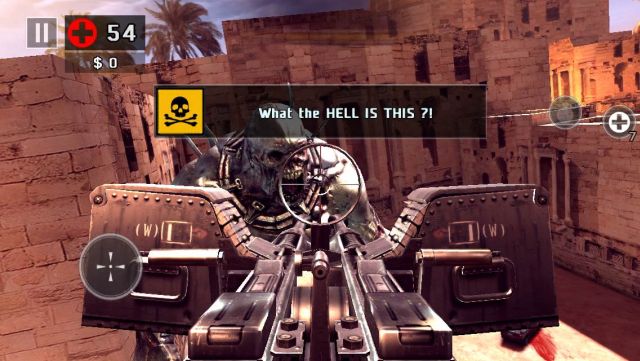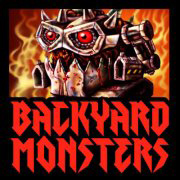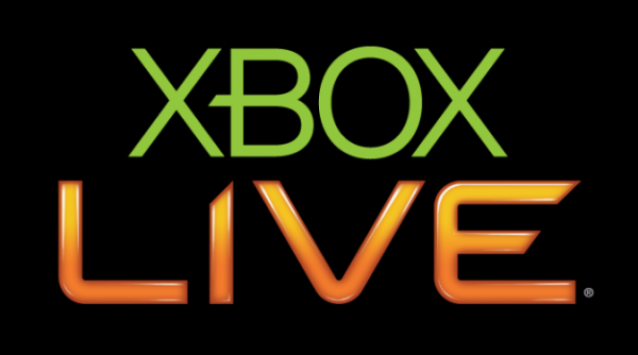

Professional wrestling gets a lot of crap thrown at it. To its detractors, it's too violent, sexist, immature and – above all – fake. And while there are grown fans who still think the predetermined results are "real," the smart fans of the sport (yes, we called it a sport) appreciate it for the amazing stunts, the colorful characters, and the rare times when two wrestlers in one ring tell such an engrossing story that you forget, if only briefly, that what you're watching is false.
Above: It's still real to us, damn it!
The annually released Smackdown series has long tried to give something to hardcore and casual fans alike, with varying results. Ever since its PS2 days, the series has had incremental improvements that kept it on top of an admittedly shrinking genre, and while the last couple years have been fun, they lacked any big changes or advancements. But with Smackdown vs Raw 2010, the series finally delivers many of the big changes fans have desired, along with some we didn't expect.
Starting with the ring work at the heart of the game, most of the still-satisfying system from previous games is intact. Grapples, strikes and taunts all work the same way, and getting around the ring feels familiar. Some fixes were added, with reversals for strikes and grapples both moved to a single shoulder button, making it easier to reverse your opponent’s moves and keeping the matches more interesting. We can routinely get into hold-reversal-hold chains now that there isn't a 50/50 chance that – after carefully timing a reversal button press – we’ll accidentally hit the left shoulder button instead of the right.
Other, smaller fixes are in, too, the most appreciated being the improved flow of signature moves to finishers. For the uninitiated, both of these are cool attacks, unique to your wrestler, that are usable only once you’ve built up enough “momentum” by pulling off normal moves and taunts. In previous years, building up enough momentum enabled you to either execute a finisher or pocket a signature move for later use. Now, however, signature opportunities appear as your momentum builds to a finisher, and completing a signature gets you instantly ready for a finisher. It makes more sense for the psychology of a match; for example, the real Undertaker is more likely to chokeslam a wrestler and then pick them up for a finishing Tombstone piledriver, instead of maybe doing a Tombstone and waiting until later to pull off a chokeslam. It makes the matches seem more natural to experienced fans, but the simplified reversals – which now apply to special moves as well – keep the easier-to-earn specials from breaking the game..
Continuing the improved simulation of actual matches, the product looks much closer to TV as well. The HUD at the top of the screen has at long last been dropped, with the wrestler's health/momentum displayed in a semicircle around their feet. The camera is placed in a more natural standard position, and the cuts and close-ups have been improved as well, with dynamic angles that mimic the look of televised matches. And while most of the wrestlers don't look exactly like the real thing, the gap is closing, with more natural-looking cuts and bruises on the wrestlers’ bodies as each match progresses.
For new players or those that have missed the series’ last couple years, the deeper aspects of the battle system might be a little confusing. But this year, developer Yuke’s took a page from its other title, UFC 2009, and included a very friendly training area that’s immediately accessible from the title screen. Start it up, and you can warm up against the computer, with plenty of clear hints and move listings to guide you. It's been needed for awhile, and SvR2010 implements in a way that’s both helpful and unobtrusive for those who want to (very quickly and easily) skip it.
If you’re just looking for a single-player experience, the Road to Wrestlemania story mode is back, with six new storylines written specifically for the game. All of these are at least good enough to be on Raw or Smackdown, with our favorite being Shawn Michaels' story, based around the maturing star battling his forced retirement. And there's now a Diva story and one especially for your created wrestlers, whose narrative is easily the funniest. To play through all six takes some time and unlocks some nice stuff, like new wrestlers and alternate costumes, making the campaigns worthwhile.
All the previous match types are back, too, including Hell in the Cell, Tables and the Elimination Chamber, though almost none of them come with any real changes (important to know if you didn’t enjoy them before). New for 2010 is the Championship Scramble event, which was introduced last year on TV and is a timed match in which the last person to get a pin or submission before the bell rings is champ. And while not new, the Royal Rumble has been improved so much it feels refreshingly new.
For years, the over-the-top rope-elimination classic was just about button mashing and frustration. Now there are multiple ways to eliminate opponents, such as the first-ever use of RR finishers, which instantly toss the enemy (for an added touch of strategy, you can also save up three finishers to give you an instant escape from being tossed). And the old method of elimination – pushing someone over the ropes to the ring apron – now mixes the quick button-tapping of earlier iterations with a minigame in which you quickly tap a sequence of face buttons in a sequence. Plus, it doesn't feel like a lost cause anymore if the computer is trying to push you out, as its formerly inhuman button-mashing skills have been scaled back to more reasonable levels. It isn't perfect, but it is the first Rumble match we can recall actually wanting to play outside of the story mode in years.




 There Will Be Ads - Microsoft plans commercial breaks on XBox Live! entertainment
There Will Be Ads - Microsoft plans commercial breaks on XBox Live! entertainment Sleeping Dogs Guide
Sleeping Dogs Guide Call of Juarez Gunslinger Wiki: Everything you need to know about the game .
Call of Juarez Gunslinger Wiki: Everything you need to know about the game . Hyrule Warriors playable Characters confirmed
Hyrule Warriors playable Characters confirmed Mario Kart 8 - How to Get a Perfect Rocket Boost Start
Mario Kart 8 - How to Get a Perfect Rocket Boost Start